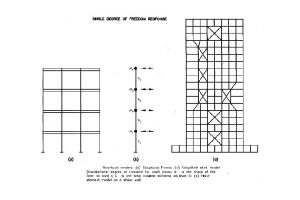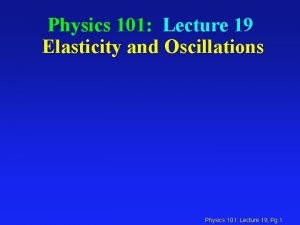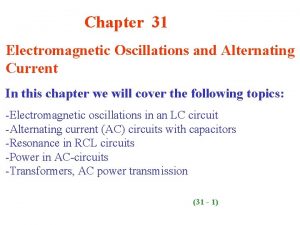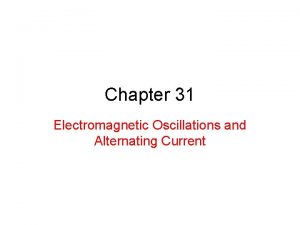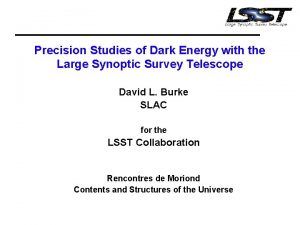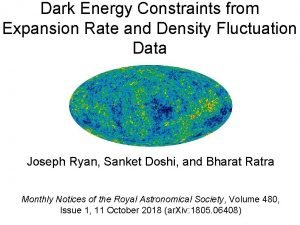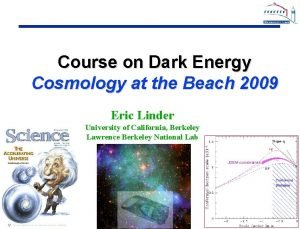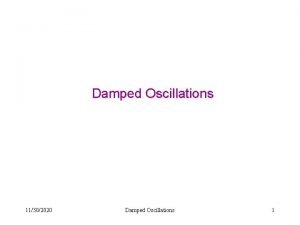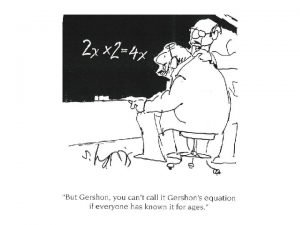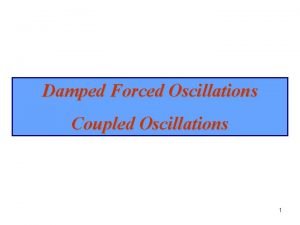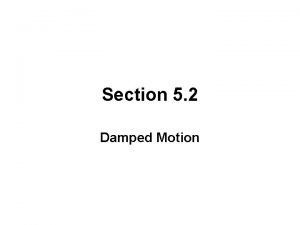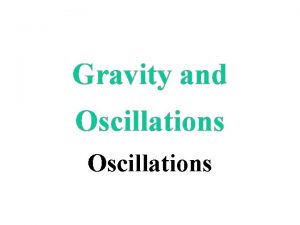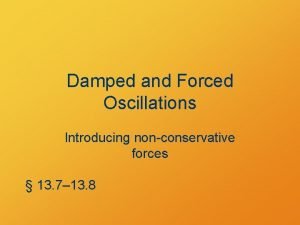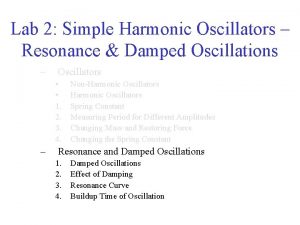Oscillations Free and Damped Oscillations Free and Damped










- Slides: 10

Oscillations Free and Damped Oscillations

Free and Damped A particle is said to be undergoing free oscillations when the only external force acting on it is the restoring force. Simple harmonic oscillations are free oscillations In real situations, however, friction and other resistive forces cause the oscillators energy to be dissipated, and this energy is converted eventually into thermal energy. The oscillations are said to be damped.

Damping

Critical Damping Point When the displacement decreases to zero in the shortest time, without any oscillation

Overdamping • Any damping over the critical damping point. • Displacement decreases to zero in a longer time than for critical damping

Examples • Shock absorbers dampers on cars for bumps • Spring doors have dampers to slow their closing

Forced Oscillations and Resonance When a body undergoes free oscillations, it vibrates at its natural frequency. Natural frequency is the frequency of the first mode of vibration, the fundamental frequency. Forced Vibrations are caused by periodic forces making the object vibrate at the frequency of the applied force, rather than the natural frequency.

Forced Vibrations As the vibration increases from zero, oscillations occur. When the driving frequency equals the natural frequency the amplitude of oscillation reaches a maximum. This frequency is known as the resonant frequency, and Resonance is said to occur.

Forced Vibrations

Damping From the graph it can be seen that as the degree of damping increases: • The amplitude of oscillation at all frequencies is reduced • The frequency at maximum amplitude shifts gradually towards lower frequencies • The peak becomes flatter
 Damped free vibration
Damped free vibration Elasticity and oscillations
Elasticity and oscillations Electromagnetic oscillations and alternating current
Electromagnetic oscillations and alternating current Electromagnetic oscillation pdf
Electromagnetic oscillation pdf Baryon acoustic oscillations
Baryon acoustic oscillations Sustained translatory joint play techniques
Sustained translatory joint play techniques The universe expanding faster should
The universe expanding faster should Baryon acoustic oscillations
Baryon acoustic oscillations Baryon acoustic oscillations
Baryon acoustic oscillations Baryonic acoustic oscillations
Baryonic acoustic oscillations Coupled oscillations
Coupled oscillations
